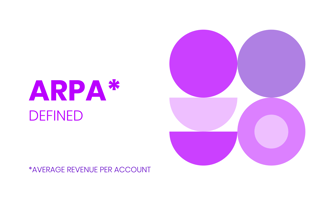Average Revenue Per Account AKA ARPA is a measure of single accounts total annual billing/revenue.
Value + Potential-based Segmenting for Sales and management
For a long time, companies have organized their B2B sales based on a current value-centric segmenting model. It does make sense, if you compare the number of companies and the share of turnover that they deliver. The Pareto Principle (80/20 rule) should be the minimum goal in order to manage risks. However, in many cases, the 80% of sales comes from a few customers, and the risks are high. In an example graph below, less than 20% of customers represent 90% of sales.
The primary goal of current value-based segmentation is to define resourcing for customers and define how and by who their relationships are managed. The regular approach is to name account directors to strategic A segment customers and key account managers to B segment customers, as well as to define team resourcing by segment. The customers in C and D segments are mostly managed with marketing, self-service, and customer service channels.
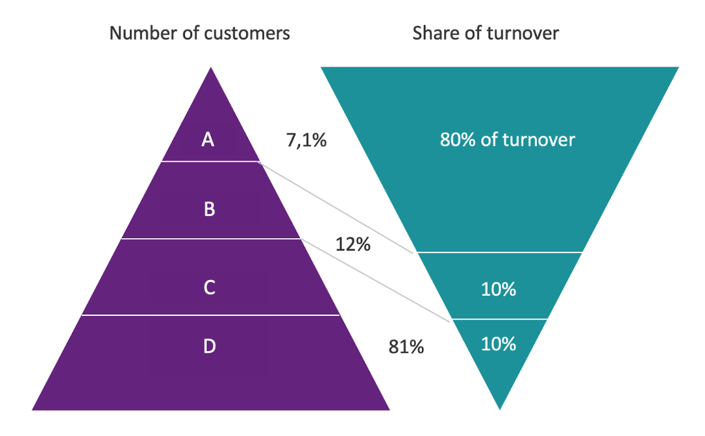
This approach doesn't effectively support growth planning and can lead to failures in customer experience for potential new customers. Although this model is intuitively very tempting, our advice is to abandon it and move to next generation. The plain current value model is a cause of blindspots in management. Current value is an outcome of history and doesn't really give meaningful advice for the future relationship development or business goal definitions.
Here's an example:
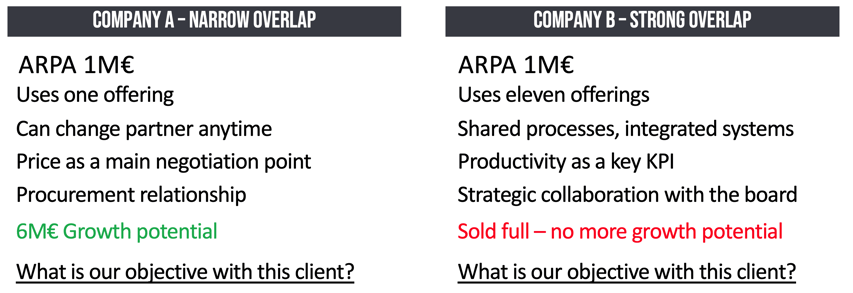
Although Company A and Company B both have 1M€ Average Revenue Per Account (ARPA) per year, these companies have totally different prospects for future relationships. When management makes decisions about goals for the next year the likely outcome is that both sales managers/KAMs from Company A and Company B get same growth goal, which would be quite difficult for the one managing the Company B relationship.
This is why we propose companies move from the current value-based segmentation and customer care models toward a combination of current value and potential matrix.
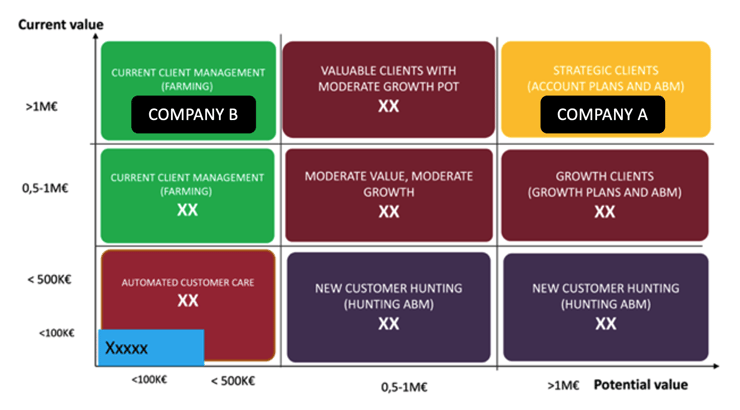
This rather simple change in perspective gives totally new tools for customer management goals, resourcing and prospects. Company A and Company B are clearly very different types of customers. By applying this approach, it is much easier also to define where the growth is possible to get and how to apply marketing, care model development, and sales resourcing more efficiently. This approach will also give new tools for sales incentive model development and definitions of goals for the sales and customer teams.
When applied as a success metric, this matrix also allows companies to monitor how customers are moving from one segment to the next, and allocate resources and care models accordingly. Of course, this approach via current & potential value is not enough for customer insights as an overall segmenting approach, but it does give crucial insights from a purely monetary point of view. It can the be supplemented with other approaches to segmenting, which would be more meaningful in terms of communicating value and how we can help different types of customers to succeed. From a management point of view, though, it is really important to understand where the growth is possible to acquire, and which companies represent the largest growth potential.
Here's a fictive example:
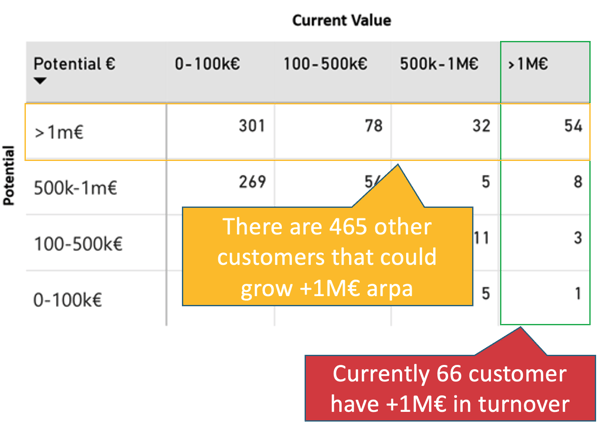
In this example, management is likely to be aware that there are 66 customers that currently have >1M€ ARPA, but less likely to know that there are also 465 companies that have a potential to grow more than 1M€ in their respective ARPA. The next questions to answer are which companies they are, what kind of companies they are, and what the potential sales is related to an offering perspective.
When looked at on an individual customer level, the company card gives answers about where the money comes from now, and what the potential is related to.
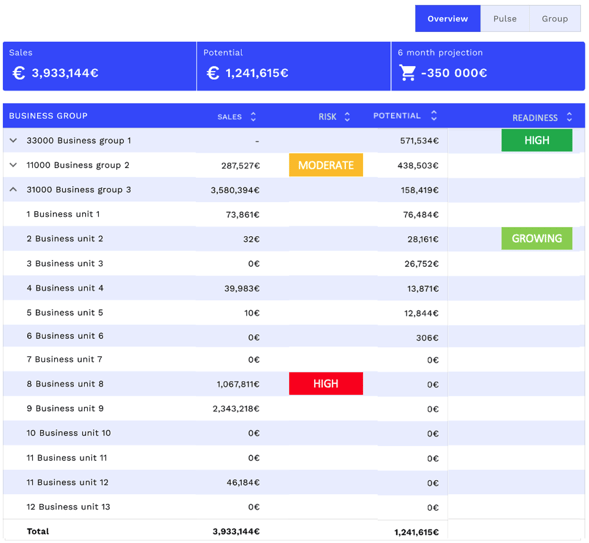
The combination of current value and potential offers market level views to management in order to define strategic priorities and goals, and customer level card views allow sales managers to plan their customer care and upselling approach in order to deliver maximum value for their customers and meet their sales goals with their named customers.
INTERESTED IN DEMO, INTRODUCTION AND SPARRING?
Please, don't hesitate to open dialogue. We are happy to help. Leave your contacts here
Learn more:
ARPA (Average revenue per account)
What is Commercial Management Operating System?
Next generation of Datadriven intelligence by connecting internal and external data
How to segment markets by urgency: Addressable, Obtainable and Active Markets


